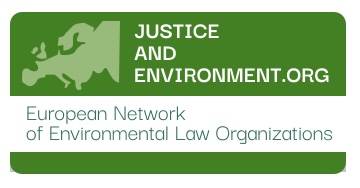Increasingly, removal ordinances regulate the killing of animal species that are strictly protected under Union law. These regulations not only violate applicable Union and international law but are also problematic from a rule of law perspective. Together with WWF Austria, ÖKOBÜRO – Alliance of the environmental movement has sent statements regarding these ordinances to the relevant authorities.
An increasing number of Austrian federal provinces are issuing ordinances that regulate the killing of species, which are strictly protected under the Habitats and the Birds Directive. This concerns mainly wolves but is also increasingly common for otters and beavers. In Tyrol, a removal ordinance has entered into force, which in principle, also regulates the killing of “problematic” golden jackals, lynx and bears, even though the latter two are demonstrably not in a good state of conservation in Austria.
In Upper Austria, a new wolf management ordinance has entered into force as well. The same is true for Salzburg, where two “G-Maßnahmengebietsverordnungen Wolf 2023” were sent for review and will enter into force at the beginning of July. Even though the Federal Chancellery has recommended in a circular from 2008 that at least a four-week period should be set for reviews of laws and ordinances (GZ BKA600.614/0002-V/2/2008), the review period in Salzburg was set for only one week.
However, with such a short comment period, it cannot be assumed that there is a serious possibility of participation from environmental organisations. Furthermore, wolves do not have to be scared off before being shot. Styria has just recently announced that it will issue a similar ordinance regulating wolves. Overall, six out of nine federal provinces in Austria have already issued a removal ordinance for wolves or are planning to do so. In Carinthia, a total of five wolves have already been shot on the basis of the Carinthian Wolf Ordinance.
From a legal point of view, it is particularly problematic that environmental organisations have no legal protection against these regulations, which violates European and international law (Art 9 Aarhus Convention). According to the Aarhus Convention, environmental organisations should also be effectively involved in species protection exemption procedures. However, the assessment procedure, as recently carried out in Salzburg and Upper Austria, does not meet the requirements of the Aarhus Convention (Art 6 Aarhus Convention) for effective participation.
In addition, the lack of a case-by-case assessment violates the Habitats Directive: Exceptions according to Art 16 Habitats Directive may only be made selectively as a reaction to a concrete (dangerous) situation. On the one hand, the exceptions must be justified regarding the overall objective of the Habitats Directive, and on the other hand, they must fulfil the following three criteria of Art 16 Habitats Directive:
1. proof of the existence of one or more of the reasons mentioned in Art 16 para 1 lit. a to d of the Habitats Directive to allow, under strict control, selectively and to a limited extent, the killing or keeping of a limited number of specimens of certain animal and plant species listed in Annex IV of the Habitats Directive, specified by the competent authorities (e.g. proof of a serious threat of harm by the authority),
2. absence of any other satisfactory solution (so-called ultima ratio),
3. assurance that the populations will remain in a favourable conservation status despite the derogation without harm.
The enactment of an ordinance does not ensure this case-by-case justice; rather, it makes the exceptions to protection the rule. For this reason, an ordinance does not constitute a correct legal form for the taking in accordance with the requirements of Union law. In fact, only the investigative procedure provided for in the notice procedure can ensure a case-by-case examination.
The statements of WWF Austria and ÖKOBÜRO – Alliance of the environmental movement on these ordinances can be found at the links below.
– Statement on the “G-Maßnahmengebietsverordnung Wolf 2023”,
– Statement on the “OÖ. Wolfsmanagementverordnung”,


